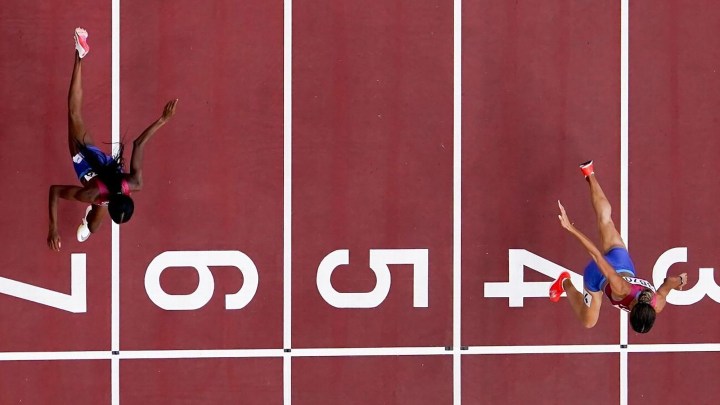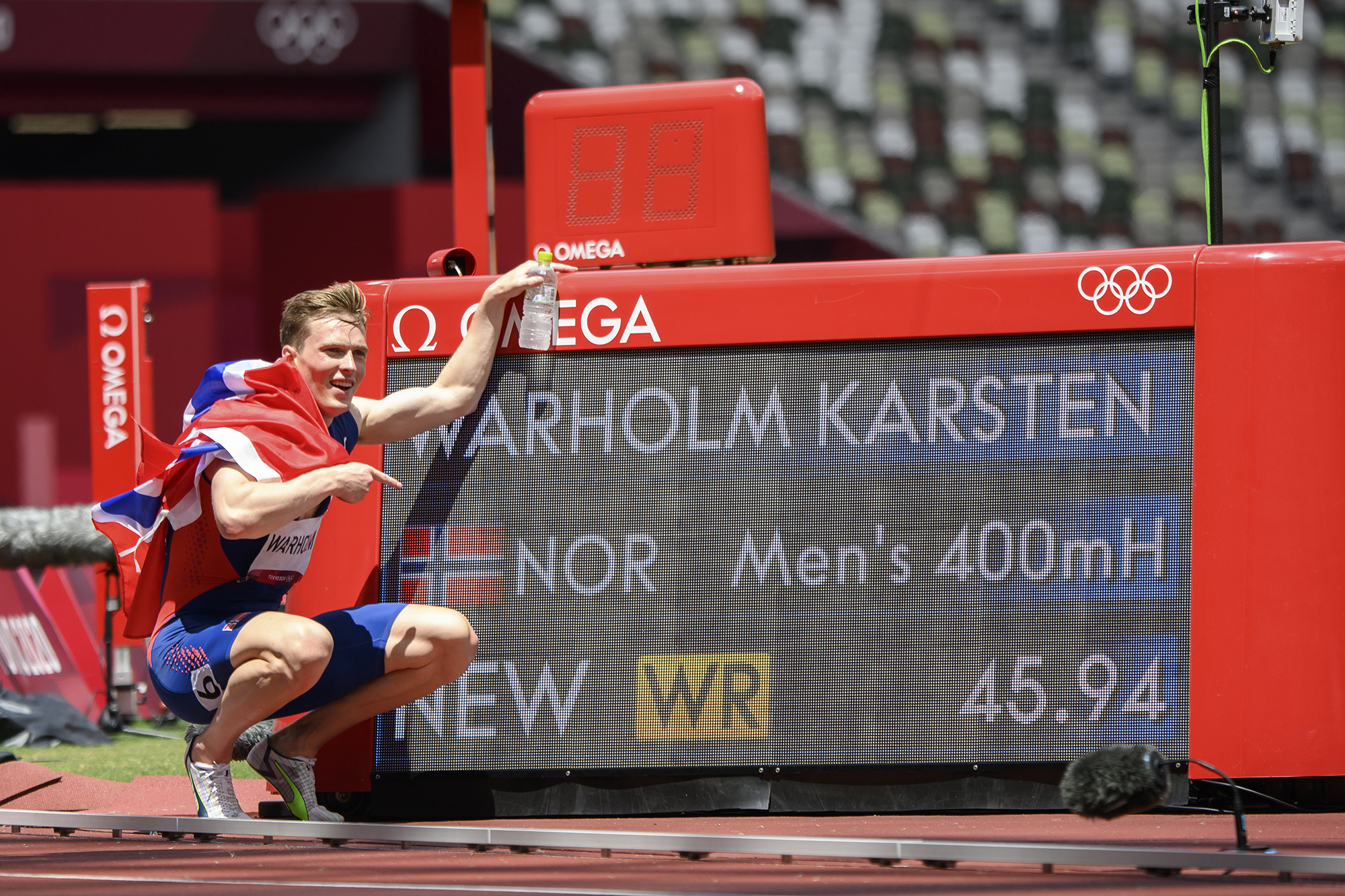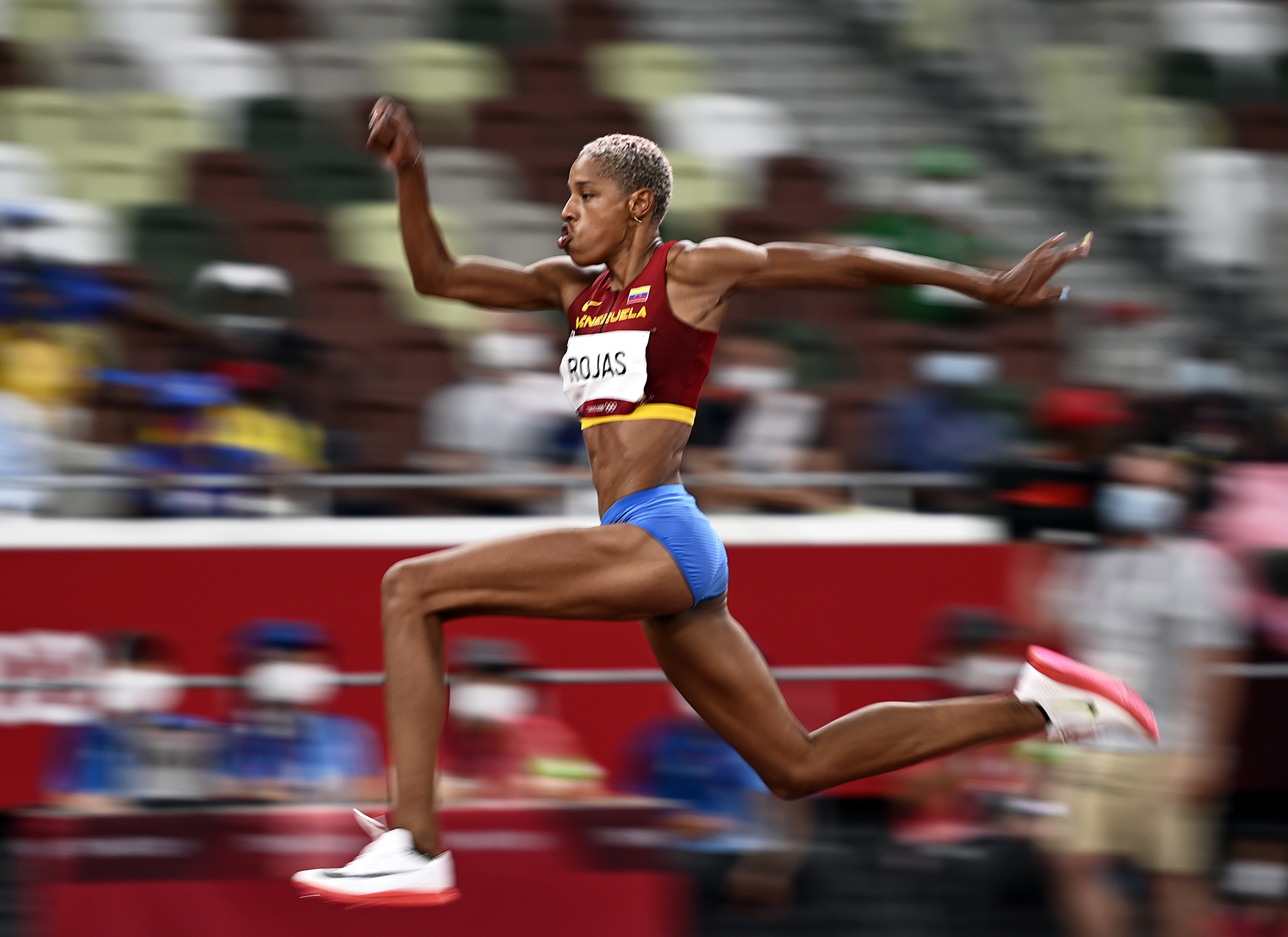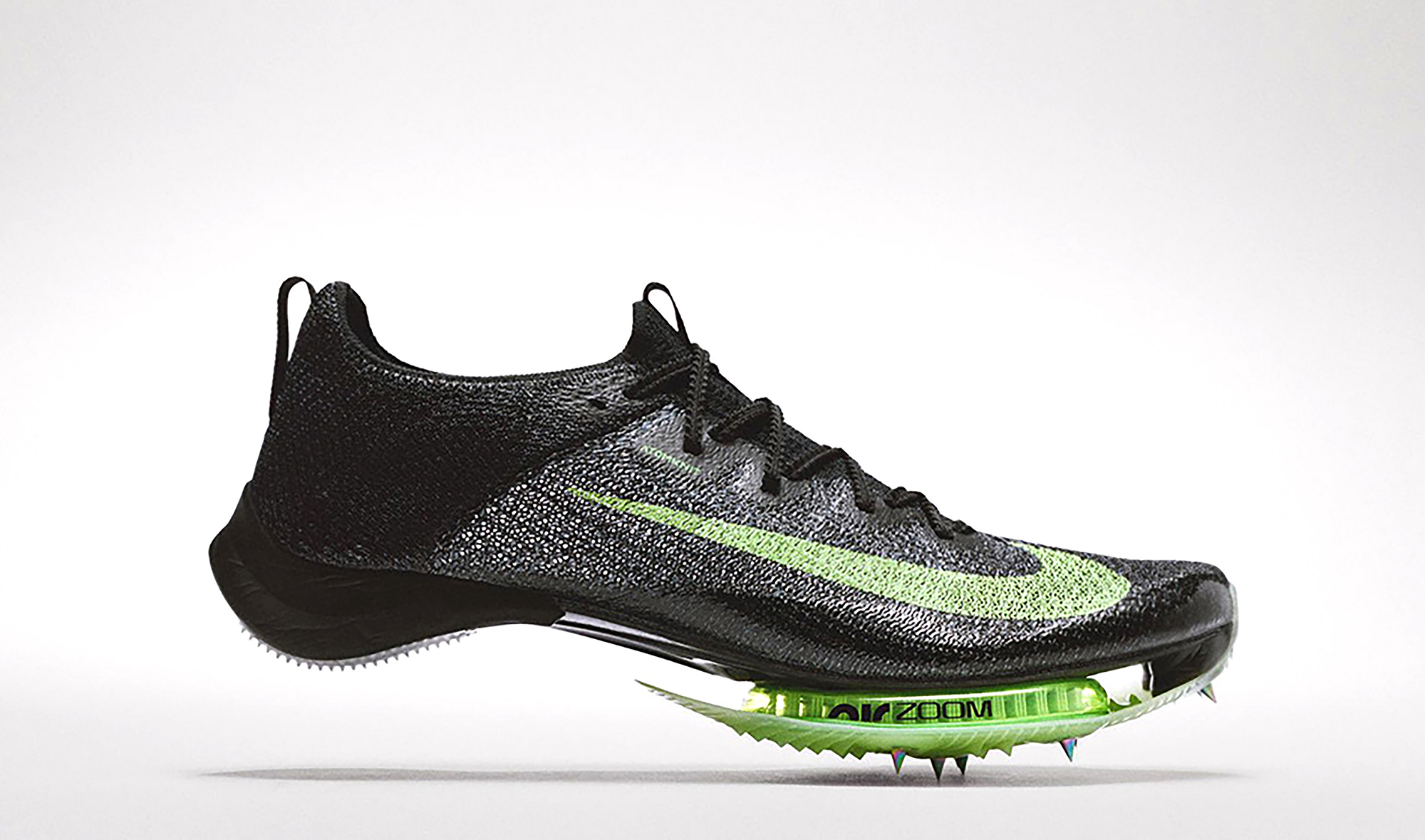DM168 SPORT
Special cocktail of performance, supershoes and track delivered Olympic Games to remember

Track and field takes centre stage when the athletics programme at the Olympics finally rolls around. Joel Mason takes a look at the stats and science (as well as at the inevitable controversies) of this year’s Games, which delivered nothing short of spectacular performances.
First published in the Daily Maverick 168 weekly newspaper.
Tokyo 2020, strongly anticipated to be hot both on and off the track, was no exception. Sometimes it can be difficult to separate the romance of the moment from the reality of it – were the performances in Tokyo really that good or were we just seduced by the show after being deprived of Olympic action for so long?
Just how good was it?
In Tokyo, 151 national records were set by athletes, a 52% increase on the number of national records set five years ago in Rio.
Even after you remove the cheaper national records set via the newly added mixed 4x400m relay, there remains a 36.4% increase in national records set compared to Rio, a clear lift in standards.
The World Athletics’ points table provides a further reference point, allowing a comparison of performances across disciplines.
According to this table, the best performance of the meeting was unsurprisingly Karsten Warholm, who lopped 0.76 seconds off his own 400m hurdle world record, which was worth 1,341 points – the equivalent of a 2.48m high jump, a 3:23:39 1,500m or a 1:39:70 800m.
Yulimar Rojas is the leading woman on the points table, with her triple jump world record of 15.67m the points equivalent of a 5.06m pole vault, a 1:53.06 800m or an 11.99sec 100m hurdles.
It wasn’t just the pinnacles of performance that were impressive, but also the depth. The three medalists in the men’s 400m hurdles all ducked under a time that, just five weeks ago, was a world record that had stood for 29 years.
The 400m hurdle women emulated the feat, with the three medal winners becoming the three fastest women of all time.
Beyond that, the men’s high jump required 2.37m just to secure a medal; the winning performance in the men’s hammer at the 2016 Games would have only been good enough for fourth in Tokyo, and eight of the top 15 women’s 100m times in Olympic history were run over the course of the 48 hours from the heats to the final.
Were the performances in Tokyo really that good? Objectively speaking, yes they were. So, why were they so good?

Karsten Warholm of Norway celebrates after winning the Men’s 400m Hurdles final at the Athletics events of the Tokyo 2020 Olympic Games in Japan on 3 August 2021. (Photo: EPA-EFE / CHRISTIAN BRUNA)

Yulimar Rojas of Venezuela competes in the Women’s Triple Jump final during the Athletics events of the Tokyo 2020 Olympic Games in Japan on 1 August 2021. (Photo: EPA-EFE / CHRISTIAN BRUNA)
- The shoes
The long-distance iterations of Nike’s so-called supershoes disrupted the distance running world and left other brands scrambling to play catch-up. In the three years since their introduction, the women’s and men’s marathon and half-marathon world records have all been broken and the all-time lists have been comprehensively repopulated, due in part to the running economy boost afforded by super shoes.
In the lead-up to Tokyo, Nike shifted its aim to the track, and now boasts a super shoe for the full range of distances from 100m right through to the marathon.
Just like the distance versions, the super spikes combine a “lightweight, compliant and resilient foam”, with a stiff plate that’s typically carbon-fibre, nylon or PEBA foam.
But unlike the distance versions that were given the 4% moniker as a nod to their savings on running economy, there’s no such tagline attached to the track spikes – and for good reason: it’s extremely difficult to quantify the benefits of the super spikes, and the advantages may not be as universal as the benefits for the longer distances.
The energetic demands of the events are entirely different, and the benefits of the shoe may not only be velocity dependent, but also athlete dependent, according to factors such as plantar flexion strength.
One thing is clear, though: the spikes have the potential to change the interaction between the foot and the ground to provide a performance advantage via changes in stiffness and leverage.
An unexpected benefit of the delayed Olympics was that following Nike showing its hand of new super spikes at the 2019 Doha Championships, competing companies had an extra year to stack their own midsoles.
While this took some heat out of Nike’s competitive advantage, it also added fuel to the innovation-vs-integrity fire that is currently burning through the sport.
- The track
As if a new wave of jacked-up spikes wasn’t enough of a mechanical advantage, engineers went ahead and produced the fastest track ever made for Tokyo’s Olympic Stadium, with designer Andrea Vallaurici suggesting that the surface provides an advantage of up to 2%.
While Vallaurici was quick to emphasise that the track is firmly within the rules, it’s purported to maximise both shock absorption and energy return through small pockets of air created by hexagonal rubber granules stacked into just 14mm of track.
But not everybody was happy with it. A handful of sprinters expressed concerns about the soreness and injury risk of the track, and world javelin champion Johannes Vetter, who finished ninth, was also quoted as saying that the Tokyo surface didn’t suit him.
Ultimately, most athletes approved of the surface, including world record breaker Sydney McLaughlin, who spoke glowingly of the bounce.
So just how much did the track paired with the new breed of spikes contribute to the next-level performances in Tokyo?
A simple answer may come from comparing performances across event groups against an historical reference point. While the distance results are sullied by tactics and humidity and the jumps are complicated by a patchwork of spike options, Ryan Crouser certainly didn’t get any extra bounce out of the shot-put circle on his way to one of the greatest throwing series in history.
Accordingly, our best shot at some resemblance of a control group comes from the throws. Of the eight available throwing golds in Tokyo, four of them were won with better performances than Rio for a 50-50 split.
Meanwhile, of the 10 golds available in individual sprint events in Tokyo, all but one gold medal performance surpassed the gold medal performance from Rio – the exception being Wayde van Niekerk’s 400m world record from 2016.
- The athletes
It would be all too easy to divert a large chunk of the credit to the track and the shoes, both of which are better than ever. But innovation doesn’t preclude the athletes from being better than ever as well.
McLaughlin owns both the world under-18 record and the world under-20 record, and so her record-setting run in Tokyo was simply a step on a path she was treading long before Nike chucked its iconic air sacks into a pair of sprint spikes.
For what it’s worth, neither McLaughlin nor Warholm was wearing Nikes on their way to world records. Warholm is outspoken against the “bullshit” spikes and has labelled them a threat to the credibility of the sport.
They’re not just empty words either. Although Warholm is confirmed to be using a carbon-fibre plate in his Pumas, there is a noticeable difference in the thickness of his midsoles compared to those of his rival Rai Benjamin’s.
In a sport that may have been suffering from a post-Bolt slump in wider public interest, we could do a lot worse than having a world record breaker and outspoken integrity advocate such as Warholm as the new poster boy.
- Controversy beyond the aids
Of course, there were a bunch of athletes who received a boost from a little more than a pair of shoes and a bouncy track. A major talking point of the Games was the plausibility of increased performance enhancing drug (PED) use due to drastic reductions in out-of-competition drug tests carried out during the Covid-19 pandemic.
The Athletic Integrity Unit provided a beacon of hope when Nigeria’s 100m medal prospect Blessing Okagbare was plucked from the semifinal line-up. She tested positive for human growth hormone.
But even at the best of times, anti-doping efforts can be largely ineffective. At the 2011 World Athletics Championships in Daegu, 0.5% of drug tests came back positive despite groundbreaking research from the same championships revealing that 43.6% of the athletes admitted to doping in the previous 12 months.
It’s a deflating reality that doping in athletics is hiding in plain sight – just like Russia, which was remarkably visible for a country that was meant to be officially banned from the Olympics due to its elaborate state-sponsored doping regime that was first exposed in 2014.
A flaccid decision from the Court of Arbitration for Sport (CAS) in 2020 removed many of the original sanctions ahead of Tokyo, leading to Russia creeping back into medal contention under the Russian Olympic Committee (ROC) alias, and ultimately turning retribution into a rebrand instead.
And, while Russia’s athletics results were poor by their own lofty standards, their overall medal tally for the Games was their highest since Athens in 2004.
Given that Russia were able to trump their medal haul from Games where they were in the midst of a large-scale PED programme, it raises some interesting questions: Was the original Russian doping programme simply ineffective? Perhaps the Russians found a way to bridge the performance gap between their clean athletes and their dirty athletes?
Or could it be that many Russian athletes are still doping? All questions they’ll never have to actively answer if the CAS continues to sit on its hands.
Further controversy looms for the sport’s decision-makers thanks to a more nuanced issue – the inclusion or exclusion of differences in sexual development (DSD) athletes, commonly referred to as intersex athletes.
In broad terms, a DSD athlete is one with XY chromosomes and the ability to use their circulating testosterone that is naturally far beyond what is observed in elite female athletes.
The DSD issue captured the public’s attention through Rio 800m champion Caster Semenya, but was recently revived in Tokyo thanks to a pair of teenagers from Namibia. Beatrice Masilingi and Christine Mboma were originally scheduled to race the 400m, but were forced to withdraw due to testosterone levels that exceeded regulation.
Thanks to a World Athletics policy based on flawed research suggesting that testosterone only confers a performance advantage for events between 400 and 1,500m, the Namibian pair were instead allowed to race in the 200m.
Mboma went on to win the silver medal in a new world under-20 record, and her performance signals the start of a new era of decision-making for World Athletics and the CAS, which all boils down to a battle between fairness and inclusion.
The verdict
Thanks to a cocktail of the shoes, the track, the extra biological help and especially the organic quality of the athletes themselves, the Tokyo track was stacked full of performances to remember.
Pre-Olympics, there was plenty of chat about whether the Games should even go ahead given the current global climate and the crippling economic toll facing a Japanese government and population who were largely unable to enjoy the usual fruits of the Games.
The sacrifices of the Japanese people in delivering the gift of the Olympics to the world when the world needed it most won’t be forgotten.
For the past 18 months, corporations, brands and governments have been telling us that we’re all in this together, but the past two weeks were one of the few times it has genuinely felt like it.
It seems fitting that one of the prevailing moments of the Games wasn’t just about winning, but about solidarity courtesy of the first shared athletics gold medal in 109 years. Maybe we are all in it together after all. Bring on the Paralympics. DM168
Dr Joel Mason is a performance scientist, researcher and coach. This article was reproduced courtesy of Trackademicblog.com.
This story first appeared in our weekly Daily Maverick 168 newspaper which is available for R25 at Pick n Pay, Exclusive Books and airport bookstores. For your nearest stockist, please click here.





















 Become an Insider
Become an Insider
Comments - Please login in order to comment.